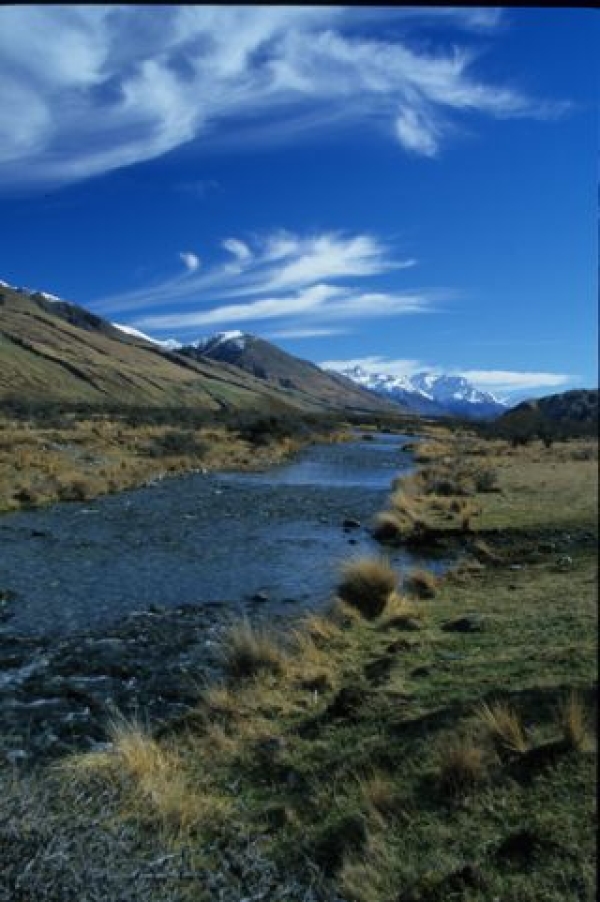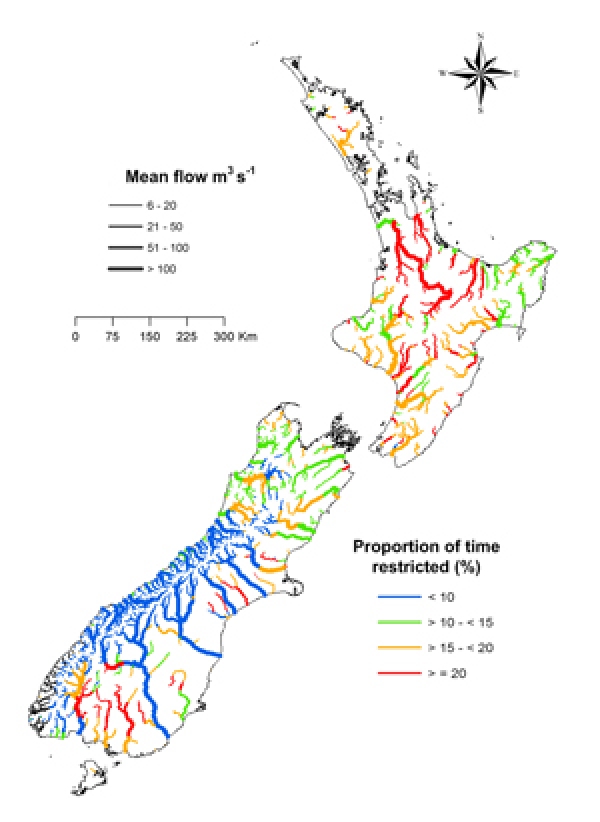Abstracting water from rivers is likely to cause changes in river flows, endangering habitats and making supply unreliable for downstream users. NIWA is working to develop river flow rules that can be applied at a local level to prevent these problems.
Changes to river flow can be limited by setting what are called ‘environmental flows’. These are set at levels that maintain a river’s habitats and hence ecological values, and that also ensure acceptable levels of reliability are achieved.
Hydrological rules of thumb are used across large (jurisdictional) regions to set minimum flows and allocation limits. These rules are applied when more detailed site-scale studies have not been carried out.
In 2008 the Ministry for the Environment proposed a National Ecological Standard for environmental flows and water levels. The Standard proposed ‘interim limits’ for water allocation, based on hydrological rules of thumb that are applied nationally. The aim of the standard is ensure limits apply in all locations. However, a recent study by NIWA showed that uniform rules imposed at national scale do not account for smaller scale variations in the environmental characteristics of a river. The result is variable outcomes for habitat protection and reliability.
NIWA is developing a method that can be used to define minimum flows and total allocation rates across regions that will result in uniform consequences for habitat protection and reliability.
Developing a more local method for assigning rivers flows
In a joint project between NIWA and CEMAGREF (France), we developed a method for assessing hydrological rules that describes their consequences for protection of local river ecosystems. These rules are based on retaining physical habitat, and reliable water flows for abstractors.
The method links regional river flow-duration curves, hydraulic geometry, and generalised physical habitat models to make assessments at many locations across a region.
The method estimates, for a given set of rules, the physical habitat that is retained for specified river species and life stages; also the proportion of time that abstractions should be restricted.
We used our method to make a national scale assessment of the consequences of the National Ecological Standard for Flows and Levels. The method demonstrated that, over a series of typical river reaches, where the river environment varies, applying a uniform hydrological rule to define minimum flows will result in some habitats and species being well-protected, but others not. Also, the water supply will vary in different reaches - not an ideal situation for people abstracting water.
We also showed that our method can be used to define local rules for setting both minimum flows and total allocation. Setting rules that are designed for a particular river or region will mean better outcomes both for the river’s environmental values and for reliability of water supply.
We are continuing to develop our new method so that it can be used by regional councils and other stakeholders concerned with regional water allocation.
Contact: Ton Snelder


